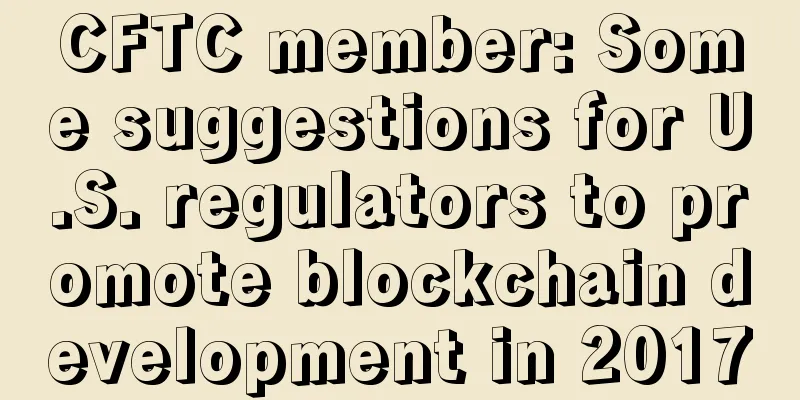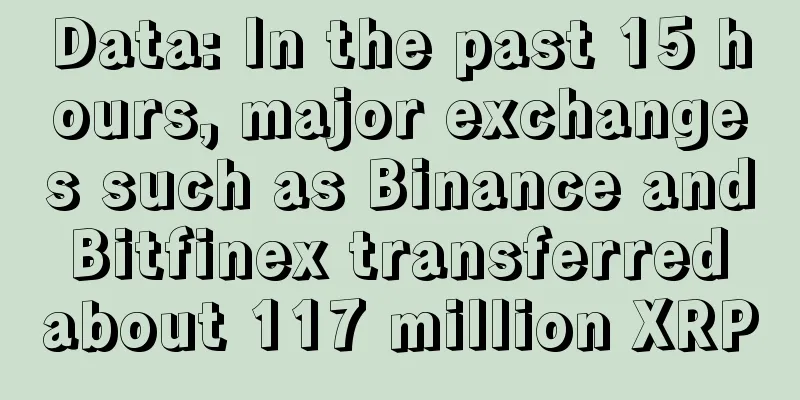CFTC member: Some suggestions for U.S. regulators to promote blockchain development in 2017

|
Rage Review : As a member of the Commodity Futures Trading Commission nominated by the President of the United States, the author of this article has made in-depth observations and analyses of technologies such as distributed ledgers, and has professional insights into the prospects for technological development and the benign interaction methods between regulators. This article systematically analyzes the development trends of emerging blockchain technologies around the world and the direction of regulatory adjustments in various countries, and proposes practical strategic implementation steps to U.S. financial regulators. This article aims to achieve a benign mutual assistance between technological progress, financial market stability, and government regulation. Translation: Annie Xu He has spoken a lot about blockchain technology because of his belief in its potential benefits to financial markets and financial regulators. The 2008 financial crisis brought a complex financial activity and capital regulatory environment to the world. Distributed ledger technology may help market participants cope with this complex operation, transaction and capital management activities. For regulators, distributed ledger technology can provide a single true record of financial transactions, cutting across loose regulatory frameworks. However, the adoption of blockchain technology requires cooperation among regulators to encourage investment and innovation in distributed ledger technology. To this end, at the beginning of the year, a feasible technology development plan was proposed to the Commodity Futures Trading Commission (CFTC) and all financial regulatory agencies, which was broken down into five major steps.
The last step is to recommend that financial regulators explore how to help Internet financial companies avoid the cumulative negative impact that may be inflicted on them by regulators in different regions. Because emerging technologies such as distributed ledgers may provide benefits that go beyond the regulatory system, financial regulators must develop unified rules and regulations as early as possible to avoid hindering the trend of innovation. The CFTC and other U.S. financial regulators already lag behind other countries in related jurisdictions. For example, the FCA has established an Innovation Hub to allow Internet financial companies to provide innovative financial products and services to the market and test new ideas in the Regulatory Sandbox it provides. At present, many national judicial institutions have begun to emulate the FCA's sandbox mechanism. 2016 is about to end, and it is a good time to summarize the achievements of this year and plan for the future. Adjustments to U.S. regulatory policies have forced us to re-examine the development of distributed ledger and Internet financial technology innovations. The five steps above are also a plan for the future. Everyone should work hard to promote the development of these technologies to achieve a healthier U.S. financial and capital markets and create benefits for market participants and American working people. |
<<: Fiat currency loses popular support, multiple factors make Bitcoin the 'grey swan' of 2017
>>: Top 3 Blockchain Healthcare Companies to Watch in 2017
Recommend
Solana down again for unknown reasons, the community angrily mocks "design flaw"
Solana (SOL), which is described by its supporter...
A woman who can marry a rich man
A woman who can marry a rich man 1. First look at...
What is the biggest risk of Bitcoin?
For many years, there has been a saying in the cr...
Will people with island patterns on their love lines definitely get divorced?
What does it mean if there is an island pattern o...
A face that stands tall and proud and won't bow down for a few pieces of silver
In life, we always meet many different people, ea...
What is the fate of men with O-shaped legs?
What is the fate of men with O-shaped legs? Men w...
What does the bifurcation at the beginning of the lifeline indicate?
What does the fork at the starting point of the l...
What are the characteristics of a woman who can help her husband?
If some women have the look that will bring good ...
What does a broken palm mean?
In palmistry, each line on the palm has a differe...
What kind of woman is the most vicious?
There is a saying that goes, "A woman has th...
BCH forks again: NODE development team versus ABC development team
OKEx’s announcement further spread the news of BC...
The face of a woman who loves to flirt with men
The face of a woman who loves to flirt with men W...
The face of a man who brings good luck to his wife and a woman who brings good luck to her husband looks like this
In physiognomy, the quality of a face has no dire...
How to achieve decentralization of Bitcoin mining?
Preface: Bitcoin is often criticized for its dece...
Is the mining market collapsing?
Yes! Bitcoin miners are shutting down. No! This i...









![Electric Power Resources Investment Promotion Conference and Bitcoin Miners Exchange Meeting-July 9 [Chengdu]](/upload/images/67e74f76bda75.webp)